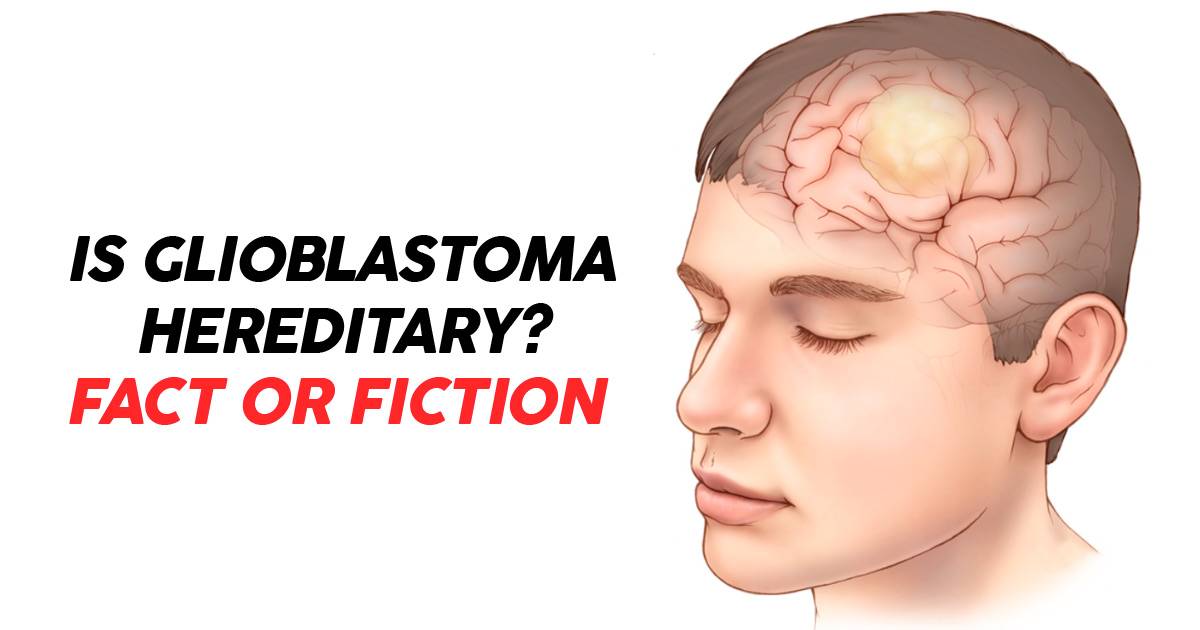Is Glioblastoma Hereditary? The Familial Connections & Genetic Influences

The enigma surrounding glioblastoma, a formidable type of brain cancer, has led many to ponder its origins and whether it runs in families. This article aims to comprehensively explore the genetic and familial aspects of glioblastoma, shedding light on questions like “Is glioblastoma hereditary?” and “Do glioblastomas run in families?”
Understanding Glioblastoma
Glioblastoma, a formidable type of brain cancer known for its aggressive nature, begins its onslaught within the glial cells of the brain. These cells play a vital role in supporting and nourishing neurons, forming an integral part of the brain’s intricate network. The challenge in treating glioblastoma lies in its origin within these essential components. As we navigate through the complexities of this formidable condition, it becomes imperative to unravel the genetic underpinnings contributing to its development and explore potential familial connections.
These glial cells, integral to the brain’s architecture, make glioblastoma an exceptionally challenging adversary to combat. Delving into the molecular intricacies driving glioblastoma and examining the broader context of familial factors provides a more comprehensive perspective on the multifaceted nature of this complex disease. By understanding how our genes and family connections may be linked to glioblastoma, you can gain insights into the intricate mechanisms at play, contributing to a deeper awareness of this formidable medical challenge.
Glioblastoma Genetic Factors
A fundamental question arises in the context of glioblastoma: Is glioblastoma genetic? Research unequivocally suggests that certain genetic brain tumors and factors contribute significantly to the onset of glioblastoma. Notably, changes in genes like TP53, EGFR, and IDH have been identified as possible signs that someone is more likely to get this very dangerous brain cancer.
However, a lingering uncertainty persists: does the hereditary aspect extend to the majority of glioblastoma cases? This query prompts a closer examination of the intricate relationship between genetics and familial connections in the context of glioblastoma. By exploring the prevalence of familial links, we aim to unravel the complexity of glioblastoma’s genetic underpinnings and shed light on the broader implications of heredity in its development.
Hereditary vs. Sporadic Glioblastoma
In understanding glioblastoma’s hereditary nature, it’s important to note that only a tiny portion of cases can be directly linked to inherited factors. The majority of glioblastoma instances, however, are categorized as sporadic, meaning they happen without a distinct family link. This raises the question: are glioblastomas hereditary for most people? The answer is found in the complex interplay between genetics and the environment.
While a few individuals might have a genetic predisposition due to specific markers, such as mutations in genes likeTP53, EGFR, and IDH, the broader picture involves a dynamic relationship with environmental influences. This underscores that glioblastoma’s prevalence extends beyond heredity, encompassing an intricate network of environmental triggers and spontaneous genetic mutations. Understanding this interplay between genetic and environmental factors is crucial for a comprehensive grasp of glioblastoma’s origins and development.
Do Glioblastomas Run in Families?
The inquiry into whether glioblastomas run in families reveals certain instances where familial connections become apparent. Notably, people with rare genetic syndromes like Li-Fraumeni syndrome, which results from a TP53 gene mutation, have a much higher risk of developing cancer, including glioblastoma. However, it’s crucial to emphasize that these familial cases represent the exception rather than the rule.
While these rare syndromes underscore a genetic predisposition that can be passed down through generations, the vast majority of glioblastoma cases occur sporadically without a clear family history. This distinction highlights the complexity of the relationship between genetic factors and glioblastoma, emphasizing the importance of understanding both familial and sporadic dimensions when examining the broader landscape of this challenging brain cancer.
Environmental Factors and Genetic Brain Tumors
Moving beyond the genetic complexities, it’s crucial to recognize the significant role that environmental factors play in the development of glioblastoma. Exposure to specific toxins and the random occurrence of genetic mutations are substantial contributors to cases of sporadic glioblastoma. In simpler terms, this means that factors in our surroundings and the chance mutations that can happen play a big part in the development of glioblastoma cases without a clear family link.
So, when we’re trying to understand glioblastoma, it’s not just about our genes; it’s also about what we’re exposed to in our environment and what we do. This comprehensive perspective, considering both genetic and environmental influences, is key to gaining a clearer picture of how glioblastoma develops and its impact on individuals.
Genetic Counseling and Testing
For those individuals contemplating whether glioblastoma might be hereditary in their case, genetic counseling and testing provide personalized insights. These services take into account not only personal family histories but also specific genetic markers, offering a broader context to empower individuals to make informed decisions about their healthcare and familial predisposition.
Genetic counseling serves as a supportive resource, guiding individuals through the complexities of their genetic information and helping them understand the potential risks associated with glioblastoma. By combining family history with genetic markers, these services enable a more comprehensive assessment, allowing individuals to proactively manage their health based on a clearer understanding of their potential genetic predispositions. This personalized approach to genetic counseling and testing contributes to a more informed and empowered decision-making process for those concerned about hereditary factors related to glioblastoma.
Are Glioblastomas Hereditary? Very Rare!
In your quest to unravel the genetic and familial connections of glioblastoma, we address the questions of heredity and familial predisposition. While specific genetic markers are associated with an increased risk, the majority of glioblastoma cases are sporadic. By comprehensively exploring these facets, we move closer to understanding the complex nature of glioblastoma, fostering hope for improved prevention and treatment strategies in the future.
